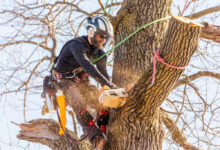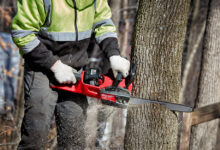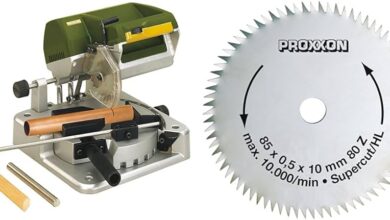Contents
- 1 Unveiling the Mysteries of Chainsaw Selection
- 2 FAQ: Unraveling the Mysteries of Chainsaw Selection
- 2.1 1. What is the best chainsaw for beginners?
- 2.2 2. How do I choose the right chainsaw size?
- 2.3 3. What safety features should I look for in a chainsaw?
- 2.4 4. How do I maintain a chainsaw?
- 2.5 5. What type of fuel do I need for a gas chainsaw?
- 2.6 6. How do I tension a chainsaw chain?
- 2.7 7. What should I wear when operating a chainsaw?
- 2.8 8. How do I start a chainsaw?
- 2.9 9. How do I stop a chainsaw?
- 2.10 10. What are the common problems with chainsaws?
- 2.11 11. How do I troubleshoot a chainsaw that won’t start?
- 2.12 12. How do I sharpen a chainsaw chain?
- 2.13 13. How do I store a chainsaw?
- 3 Conclusion: Embracing the Chainsaw
- 4 Disclaimer
Unveiling the Mysteries of Chainsaw Selection
The world of chainsaws can be a daunting labyrinth, particularly for first-time buyers. With an overwhelming array of models and specifications, navigating this terrain can be a formidable task. However, by unraveling the intricacies of chainsaw selection, we can uncover the secrets to selecting the ideal tool to wield in your forestry endeavors.
Delving into the Depths of Chainsaw Knowledge
Before embarking on the quest for the perfect chainsaw, it is imperative to delve into the fundamental concepts that underpin this essential tool. Understanding the anatomy of a chainsaw, its various components, and their respective functions is paramount in making an informed decision.
Firstly, let us familiarize ourselves with the power source. Chainsaws are typically powered by either electricity or gasoline. Electric chainsaws are generally lighter and quieter than their gasoline counterparts, making them well-suited for light-duty tasks such as trimming branches or small-scale tree felling. However, their reliance on a power cord restricts their mobility.
In contrast, gasoline chainsaws offer greater power and versatility, making them the preferred choice for heavier-duty applications such as felling large trees or cutting thick logs. However, they are typically noisier and heavier than electric chainsaws.
With a clear understanding of the power source options, we can now venture into the realm of chainsaw types. Each type is designed for specific tasks and environments, ensuring that there is a chainsaw tailored to every need.
- Corded Electric Chainsaws: These are the lightest and most compact type of chainsaw, powered by an electric cord. Ideal for small-scale tasks like pruning or cutting firewood, they offer precision and maneuverability. However, their limited range and reliance on an electrical outlet can be restrictive.
- Cordless Electric Chainsaws: Offering greater freedom of movement than corded electric chainsaws, cordless models are powered by rechargeable batteries. Their portability makes them suitable for tasks where an electrical outlet is not accessible, such as tree pruning or limb removal. However, their runtime is有限, and they may not be as powerful as corded or gasoline models.
- Gas Chainsaws: The most powerful type of chainsaw, gas chainsaws are fueled by a gasoline-oil mixture. Their exceptional power and cutting capabilities make them ideal for heavy-duty tasks such as felling trees or cutting large logs. However, they are also heavier and noisier than electric models, and they require regular maintenance.
Unveiling the Secrets of Chainsaw Features
Now that we have explored the various types of chainsaws, it is time to delve into the labyrinth of features that differentiate one model from another. These features play a crucial role in determining the performance, efficiency, and user experience of a chainsaw.
- Bar Length: The bar length refers to the length of the guide bar, which holds the chain. A longer bar can cut through thicker logs or trees, but it also adds weight and reduces maneuverability. Shorter bars are more suitable for smaller tasks and provide increased control.
- Chain Pitch and Gauge: The chain pitch refers to the distance between drive links on the chain, while the chain gauge indicates the thickness of the drive links. A larger chain pitch provides greater cutting efficiency, while a smaller pitch offers smoother cuts. The chain gauge should match the bar’s gauge to ensure proper fit and performance.
- Safety Features: Chainsaws are inherently dangerous tools, so it is essential to consider safety features when selecting a model. Anti-kickback systems and chain brakes are designed to minimize the risk of injury in the event of a kickback or chain entanglement.
Empowering Yourself with Chainsaw Knowledge
With a solid foundation in chainsaw terminology and features, you are now equipped to embark on the path of selecting the perfect chainsaw for your needs. By considering the factors discussed in this comprehensive guide, you can confidently navigate the vast array of models and make an informed decision that will empower you to tackle your forestry tasks with precision and efficiency.
Remember, the journey to chainsaw mastery begins with knowledge. By embracing the insights provided in this article, you have taken the first step towards becoming a skilled and confident chainsaw operator.
| Feature | Description |
|---|---|
| Power Source | Electric: Corded or cordless Gasoline: Powerful and versatile |
| Type | Corded Electric: Light and compact Cordless Electric: Portable and convenient Gas: Powerful and heavy-duty |
| Features | Bar Length: Determines cutting capacity Chain Pitch and Gauge: Affects cutting efficiency and smoothness Safety Features: Anti-kickback systems and chain brakes |
FAQ: Unraveling the Mysteries of Chainsaw Selection
1. What is the best chainsaw for beginners?
Corded electric chainsaws or small cordless electric chainsaws are ideal for beginners, offering ease of use and maneuverability.
2. How do I choose the right chainsaw size?
Consider the tasks you need to perform. A longer bar is suitable for felling large trees, while a shorter bar provides greater control for smaller jobs.
3. What safety features should I look for in a chainsaw?
Anti-kickback systems and chain brakes are essential safety features that minimize the risk of injury.
4. How do I maintain a chainsaw?
Regular cleaning, chain sharpening, and proper storage are crucial for maintaining optimal performance and extending the life of your chainsaw.
5. What type of fuel do I need for a gas chainsaw?
Gas chainsaws require a mixture of gasoline and two-stroke engine oil, typically in a 50:1 ratio.
6. How do I tension a chainsaw chain?
Proper chain tension is essential for safe and efficient cutting. Follow the manufacturer’s instructions to adjust the tension using the chain tensioner.
7. What should I wear when operating a chainsaw?
Wear appropriate protective gear, including eye protection, earplugs or ear muffs, gloves, and sturdy boots to minimize the risk of injury.
8. How do I start a chainsaw?
Follow the manufacturer’s instructions for starting your chainsaw. Typically, it involves priming the engine, engaging the choke, and pulling the starter cord.
9. How do I stop a chainsaw?
To stop a chainsaw, release the throttle trigger and engage the chain brake. Do not simply let the engine run out of fuel.
10. What are the common problems with chainsaws?
Common problems include dull chains, improper chain tension, fouled spark plugs, and carburetor issues.
11. How do I troubleshoot a chainsaw that won’t start?
Check for fuel, spark, and compression. If any of these are missing, troubleshoot accordingly.
12. How do I sharpen a chainsaw chain?
Use a chainsaw chain sharpener to maintain the sharpness of the chain. Follow the manufacturer’s instructions for proper sharpening techniques.
13. How do I store a chainsaw?
Store your chainsaw in a dry and secure place. Drain the fuel and oil, and clean the chainsaw before storage. Lubricate the chain and bar to prevent rust.
Conclusion: Embracing the Chainsaw
The world of chainsaws is a vast and multifaceted realm, filled with a myriad of choices that can bewilder even the most seasoned user. However, by arming yourself with the knowledge and insights provided in this comprehensive guide, you have unlocked the secrets to selecting the perfect chainsaw for your needs.
Whether you are a seasoned professional or a novice embarking on your first forestry adventure, the tips and advice presented here will empower you to make an informed decision. By considering the factors discussed, you can embark on your chainsawing endeavors with confidence, knowing that you have chosen the right tool for the job.
Remember, the key to successful chainsaw operation lies not only in selecting the right model but also in adhering to proper safety protocols and maintaining your chainsaw meticulously. By following the guidelines outlined in this article, you can harness the power of this formidable tool and accomplish your forestry tasks with precision and efficiency, transforming your outdoor adventures into triumphs of skill and accomplishment.
Disclaimer
This article is intended to provide general guidance and information on choosing a chainsaw. It is essential to consult with a qualified professional or refer to the manufacturer’s instructions for specific details and safety measures related to chainsaw operation and maintenance. The author assumes no liability for any damages or injuries resulting from the use of this information.









